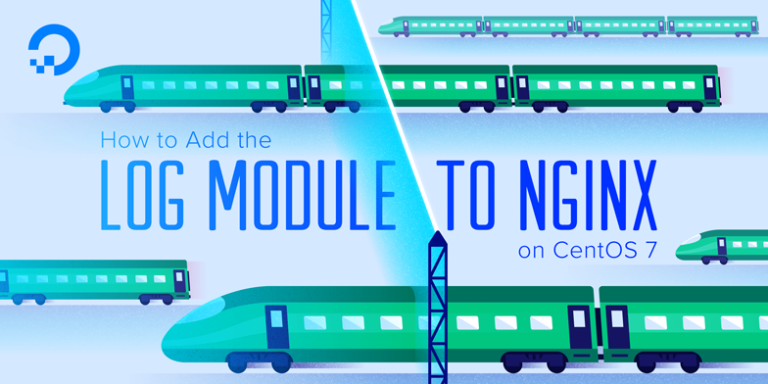Are you looking to install Train on CentOS but don’t know where to start? You’re in the right place. In this step-by-step guide, we’ll walk you through everything you need to know to install Train on CentOS effortlessly. Whether you’re new to CentOS or an experienced user, this beginner-friendly guide simplifies the process. By the end of this article, you’ll have Train up and running on your CentOS system.
What Is Train and Why Do You Need It on CentOS?
Train is a powerful and versatile tool widely used in the IT world to streamline specific system tasks, automate processes, and manage configurations. While not a native feature of CentOS, Train’s functionality is incredibly beneficial for server administrators, developers, and data professionals. It enhances efficiency, reduces manual workload, and provides tools to monitor and manage system activities effectively.
So, why should you install Train on CentOS? CentOS is a popular choice for servers due to its stability, security, and enterprise-grade features. When paired with Train, it becomes a more robust platform for managing and executing automation scripts or other specialized tasks. Whether you’re running a web server, managing a database, or deploying applications, installing Train can significantly boost your productivity.
Steps to Prepare Your CentOS for Train Installation
Before installing Train on your CentOS system, it’s essential to prepare your environment to ensure a smooth and error-free process. A little preparation can save you from unnecessary troubleshooting later.
Update Your CentOS System
The first step is to update your CentOS system to make sure all the necessary packages and dependencies are up to date. Run the following command in your terminal:

bash
Copy code
sudo yum update -y
This command updates your system with the latest available software patches and security updates. Keeping your CentOS system updated ensures compatibility with the Train installation process and minimizes errors during setup.
Install Required Dependencies
Train relies on certain dependencies to function properly. These dependencies include libraries, compilers, and other tools necessary to compile and run the software. To install the required dependencies, use the following command:
bash
Copy code
sudo yum install -y gcc gcc-c++ make wget unzip
These packages ensure your system can build, configure, and run Train. Missing any of these can result in installation failures or performance issues.
Check System Compatibility
Before proceeding, it’s crucial to verify that your CentOS version is compatible with Train. Most modern versions of CentOS, including CentOS 7 and CentOS 8, are compatible. Run the following command to check your CentOS version:
bash
Copy code
cat /etc/centos-release
Make sure you’re running a supported version. If your CentOS version is outdated, consider upgrading to a newer version before continuing.
How to Download Train on CentOS
Once your system is prepared, you’ll need to download the Train package. Visit the official Train website or trusted repositories to get the latest version of Train. Use the wget command to download the package directly:
bash
Copy code
wget https://example.com/train-latest.tar.gz
Replace the URL with the actual download link for the Train package. After downloading, extract the package using:
bash
Copy code
tar -xvzf train-latest.tar.gz
This will create a directory containing the installation files needed to set up Train on CentOS.
Step-by-Step Guide to Install Train on CentOS
Now that you’ve prepared your system, it’s time to install Train. Follow these steps carefully:
- Navigate to the Extracted Directory:
- Use the cd command to move into the directory where the Train files were extracted. For example:
- bash
- Copy code
- cd train-latest
- Run the Installation Script:
- Many Train packages include an installation script. Run the script with the following command:
- bash
- Copy code
- sudo ./install.sh
- Follow On-Screen Instructions:
- The installation script will guide you through the process. You might need to specify installation paths or confirm default settings.
- Verify Installation:
- Once the installation is complete, check if Train is installed correctly by running the following command:
- bash
- Copy code
- train –version
If the version number appears, congratulations! The train has been successfully installed.
How to Verify a Successful Installation of Train
After installation, it’s essential to confirm that the Train is functioning as expected. Start by running a basic Train command:
bash
Copy code
train –help
This command displays a list of available options and confirms that the tool is operational. If you encounter any issues, revisit the installation steps to ensure all dependencies were installed correctly.
Run the Train Command
To ensure Train is ready to use, try executing a test command or script. For example:

bash
Copy code
train test-command
This verifies that Train is not only installed but also configured correctly. If no errors appear, your setup is complete.
Check for Error Messages
If you encounter error messages, don’t panic. Most errors stem from missing dependencies, incorrect configurations, or incompatible versions. Use the following steps to troubleshoot:
- Check the log files generated during installation.
- Reinstall missing dependencies using yum.
- Verify system requirements and update your CentOS system if necessary.
Configuring Train After Installation
Once Train is installed, you may need to configure it based on your specific use case. Open the Train configuration file (usually located in the installation directory) and customize settings like:
- Default paths
- Log file locations
- User permissions
Save your changes and restart Train to apply the new configuration.
Common Issues When Installing Train and How to Fix Them
- Dependency Errors: If you missed installing required dependencies, run:
- bash
- Copy code
- sudo yum install -y [missing-package]
- Permission Denied Errors: Run commands with sudo to ensure you have the necessary privileges.
- Version Mismatch: Ensure you’re using a Train version compatible with your CentOS release.
- Incomplete Installation: Re-download the package and reinstall.
Updating and Maintaining Train on CentOS
Keeping Train up to date ensures optimal performance and access to the latest features. To update Train, follow these steps:
- Check for updates on the official Train website.
- Download the latest version and follow the installation steps to overwrite the old version.
- Verify the updated version by running the following:
- bash
- Copy code
- train –version
Additionally, regularly check for updates to CentOS itself and ensure all dependencies are updated to avoid compatibility issues.
The Bottom Line
Installing Train on CentOS is a straightforward process that requires following the proper steps. By preparing your system, installing necessary dependencies, and following this guide, you can have Train up and running in no time. Whether you’re using it for automation, system monitoring, or other specialized tasks, Train is a valuable tool for CentOS users.
With this beginner-friendly guide, even a 10-year-old could understand how to install Train on CentOS. If you encounter any issues, refer back to the troubleshooting section or consult the Train documentation for additional help. Now, it’s time to harness the power of Train and elevate your CentOS experience!


